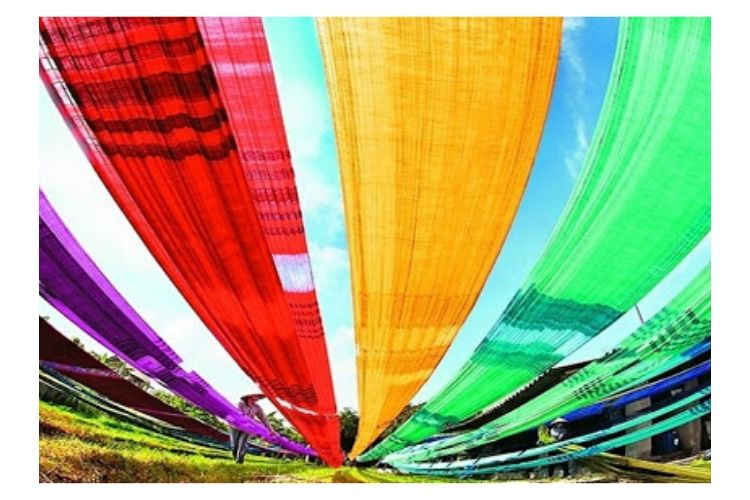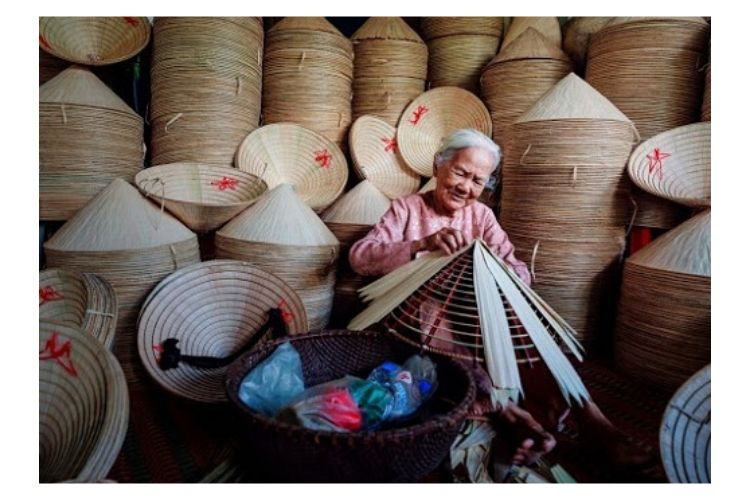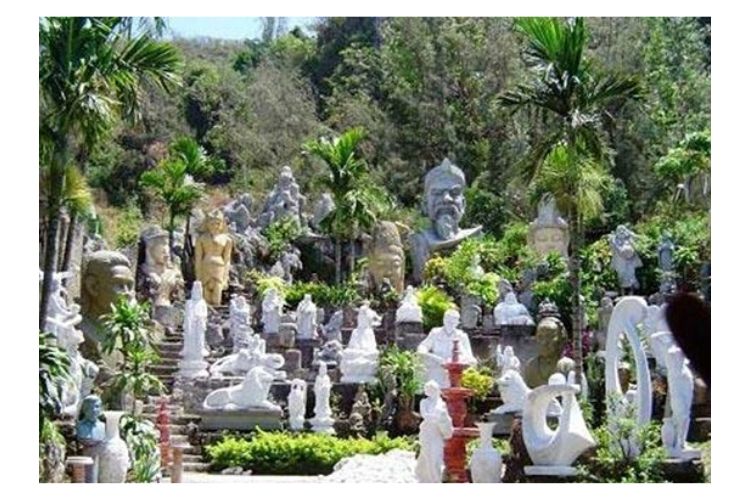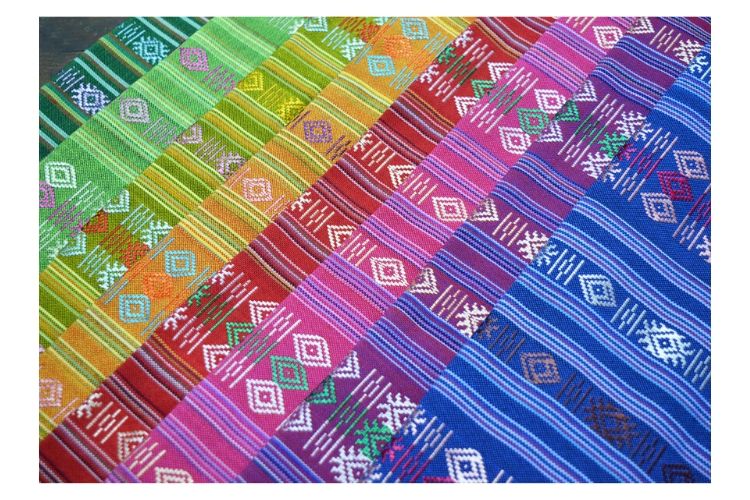Famous Traditional Handicraft Villages in Vietnam

Whether you are looking for some souvenirs from Vietnam to bring home and impress your friends or you want to explore Vietnamese craftsmanship, visit traditional handicraft villages in Vietnam. With a rich history and high skilled craftsmen, these villages have become one of the best parts of Vietnamese culture.
Boasting not only beautiful landscapes, Vietnam also offers you an authentic experience with traditional handicraft villages where you can look into the country’s culture, customs and traditions. Vietnam handicraft products are not merely daily use products but the artworks represent the heart and soul of craftsmen by every single sophisticated detail they make.
Famous Traditional Handicraft Villages in Vietnam
Although industrialization and mass production somehow hurt the traditional jobs, the handicrafts are still thriving and find their way inside and outside Vietnam. We will guide you through the most popular handicraft villages from the North to the South of Vietnam.
Bat Trang Pottery Village – Hanoi
 Bat Trang is a traditional porcelain and pottery village in the outskirts of Hanoi which has lasted around seven centuries. Its advantageous location rich in clay provides them with abundant ingredients to develop the work. Dating back to the 15th -17th centuries, Bat Trang pottery and ceramics had already made its way to other countries thanks to Japan, Chinese and Western trading boats passed by Thang Long and Pho Hien, the two ancient trade centers in the north of Vietnam.
Bat Trang is a traditional porcelain and pottery village in the outskirts of Hanoi which has lasted around seven centuries. Its advantageous location rich in clay provides them with abundant ingredients to develop the work. Dating back to the 15th -17th centuries, Bat Trang pottery and ceramics had already made its way to other countries thanks to Japan, Chinese and Western trading boats passed by Thang Long and Pho Hien, the two ancient trade centers in the north of Vietnam.
Their popular products are household daily use, worshiping or decoration purposes, which are well known for their high quality and beautiful designs. Nowadays, artisans combine traditional methods and modern techniques to create more special products and increase their quality. Bat Trang village is now an interesting destination for both young locals and foreigners to come and watch skillful artisans produce each product so that they can understand more about its historical and traditional values of this handicraft artwork.
Van Phuc Silk Village – Hanoi

Van Phuc, which is famous for its traditional weaving and premium quality silk products, is the oldest and most visited silk village in Viet Nam. In the Nguyen dynasty, Van Phuc silk was brought to Hue Imperial Citadel to make dresses for royal members. Van Phuc silk entered the European market first between 1931 and 1932 through an international silk exhibition in France and gained a good reputation. Nowadays, Van Phuc silk is favored in many countries around the world thanks to its diverse types and models as well as distinctive features like smooth, light and cool.
When you visit the village, you will experience the vibe of ancient Vietnamese northern villages with massive banyan trees, wells and communal houses and watch local artisans working with their looms for more products. You can look around the colorful silk shops in the village to choose the best apparel for yourself or bring home the unique finest gifts.
» See more on Hanoi Full Day City Tour
Do Papermaking – Suoi Co Village, Hoa Binh

Do paper (poonah paper) making is an ancient craft found and developed a long time ago in northern Vietnam. The making process is complicated which takes around 15 days from preparing materials to production. Do Paper is thin but tough and durable which is up to several decades and it has long been used for folk arts such as folk paintings, manuscripts, royal edicts. According to historical documents, Do paper making was first practiced by Nghia Do and Buoi villagers in Hanoi and then transferred to Dong Cao villagers in Bac Ninh province. In 2006, the Vietnam Association of Crafts Villages chose Suoi Co village, Hoa Binh province to preserve the Do papermaking as Suoi Co has abundant material and clean water, essential ingredients for producing. Zo Project also plays an important role in preserving and developing this traditional papermaking.
Getting through many difficulties finding its position in today’s market, Do paper is now favorable again with a variety of products such as notebooks, paper fans, postcards, paintings, even earrings, etc. By preserving Do paper handicraft, local people have a chance to introduce their unique traditions to visitors and improve their income thanks to tourism and Do paper products.
Dong Ho Painting Village – Bac Ninh
 Dong Ho Painting Village in Bac Ninh province, 35km from east of Hanoi is famous for its traditional paintings, used as home decoration and especially favored for Lunar New Year celebrations as the painting makes the Tet atmosphere warmer. Scenes of rustic daily life, historical figures and wishes for happiness, fertility and prosperity are often the theme of Dong Ho Paintings. A special feature of these paintings is the ink which is made from natural ingredients such as the ash of burned bamboo leaves, ground oyster shells and flowers; and these colors are really durable.
Dong Ho Painting Village in Bac Ninh province, 35km from east of Hanoi is famous for its traditional paintings, used as home decoration and especially favored for Lunar New Year celebrations as the painting makes the Tet atmosphere warmer. Scenes of rustic daily life, historical figures and wishes for happiness, fertility and prosperity are often the theme of Dong Ho Paintings. A special feature of these paintings is the ink which is made from natural ingredients such as the ash of burned bamboo leaves, ground oyster shells and flowers; and these colors are really durable.
Dong Ho Painting has become a part of Vietnamese culture and inspired modern Vietnamese artists. The best time to visit the village is lunar December before the Lunar New Year to experience the vibrant atmosphere and watch skillful artists passionately create their paintings.
Conical Hat making villages in Hue

Since a long time ago, conical hats (non la) have become a symbol of Vietnamese culture, particularly the image of elegant Vietnamese women in Ao Dai and Non La. Among different places which make conical hats in Vietnam, Hue is the most famous place home to many conical making villages such as Da Le, Phu Cam, Doc So, Trieu Tay, Tay Ho, etc. You can find conical hats with the decoration of their Hue famous landscapes such as the Perfume River, Truong Tien Bridge. They also make Hue poem conical (non bai tho) with distinctive features.
Traditional conical hat villages in Hue have formed and developed for hundreds of years and nowadays still remain the traditional craft. To complete a conical hat, there is a meticulous process that is up to 16 stages and almost every stage requires diligence and skillfulness of a craftsman’s hand. A visit to one of the villages during your Hue day trip must be an unforgettable trip as you can directly watch the craftsmen working on their aesthetic products and bring home the most beautiful conical hats.
Non Nuoc Stone Carving Village – Da Nang

Non Nuoc stone carving village located at the foot of Marble Mountains in Da Nang is a famous traditional handicraft village in Vietnam with exquisite sculptures made from stone. It is the art of blowing the human soul into the insensible trone. Originally, the craft products were made to serve daily life of locals such as rice mortars, grain grinders and tombstones.
Nowadays the talent artisans have created more categories for different purposes including worshipping, home decoration or even jewelry. Previously, stones were taken directly from Marble Mountain, however, the villagers are now more aware of preserving their relic site and protecting their traditional skills so materials for their works are imported from other regions.
This is a must-see attraction in Da Nang where you can explore the craft village, admire the masterpieces and watch highly skilled carvers creating beautiful sculptures with love.
Chau Giang Brocade Weaving Making Village – An Giang

Chau Giang is home to thousands of Cham people with their famous brocade weaving technique. Their popular brocade products such as scarfs, hats, jackets or sarongs are manually weaved featuring subtle and artistic patterns. They use natural materials and colors from plants and fruits to dye fabrics which create durable products. To create one brocade product is a process of hard work, creativity and cultural influence.
Your trip to Mekong Delta should include a visit to this peaceful traditional handicraft village to admire the landscape and have a chance to watch Cham women in their traditional costumes weaving by their looms.
© Maika Tours
Written by Tuyen Vo
You May Also Like:
https://maikatours.com/2020/05/11/things-to-do-in-hanoi/
https://maikatours.com/2020/03/31/northern-vietnam-travel-best-places-for-the-wanderlust/
https://maikatours.com/2020/03/25/unesco-world-heritage-sites-in-vietnam-p-1/